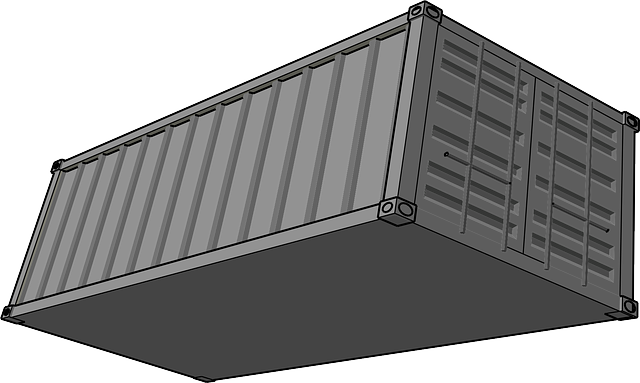Multi-truck policy management is crucial for protecting fleet investments through tailored liability coverage, balancing cost efficiency, regulatory compliance, and safety. By assessing vehicle, driver, and route risks, fleet managers can structure policies integrating commercial auto, cargo, and workers' compensation insurance while leveraging technology for real-time risk mitigation and consistent audits to ensure ongoing effectiveness and compliance.
In today’s competitive trucking industry, effective multi-truck policy management is paramount for operational success. This comprehensive guide delves into creating robust long-term plans, emphasizing the crucial aspect of liability coverage for fleets. We explore key strategies such as assessing risk, structuring insurance policies, and implementing monitoring systems to ensure compliance, cost-efficiency, and maximum protection for diverse fleet operations. By mastering these techniques, trucking businesses can navigate risks, mitigate liabilities, and foster sustainable growth.
Understanding Liability Coverage for Fleets: The Cornerstone of Multi-Truck Policy Management

In the realm of multi-truck policy management, understanding liability coverage for fleets serves as the cornerstone upon which effective long-term strategies are built. Each truck within a fleet represents a significant investment, and ensuring comprehensive liability protection is paramount to safeguard these assets. Liability coverage for fleets encompasses a range of potential risks, from accidents and property damage to legal liabilities arising from operational mishaps. By meticulously tailoring liability policies, fleet managers can mitigate financial exposure, protect their business interests, and maintain compliance with regulatory requirements.
Comprehending the nuances of liability coverage allows for informed decision-making regarding risk management. This includes evaluating the type and extent of coverage needed based on the nature of operations, geographical locations, and specific industry standards. Effective fleet managers recognize that one-size-fits-all policies are inadequate; instead, they customize liability plans to address unique challenges and ensure optimal protection. Such a strategic approach not only minimizes financial losses but also fosters a culture of safety and accountability within the trucking operation.
Assessing Risk and Defining Fleet Needs: A Comprehensive Approach to Long-Term Planning

Effective long-term planning for multi-truck policy management begins with a comprehensive assessment of risk and definition of fleet needs. By thoroughly evaluating the unique risks associated with your trucking operations, you can tailor liability coverage for fleets to mitigate potential losses and ensure compliance with regulatory requirements. This involves not just identifying hazards but also understanding their likelihood and potential impact.
Consider factors such as vehicle type, route characteristics, cargo types, driver behavior, and environmental conditions. This holistic approach allows insurers and fleet managers to collaboratively develop risk management strategies that extend beyond basic liability coverage for fleets. The result is a robust framework designed to optimize safety, reduce costs, and enhance operational efficiency over the long term.
Structuring Your Multi-Truck Insurance Policy: Balancing Protection, Cost, and Compliance

When structuring a multi-truck insurance policy, fleet managers must carefully balance three key factors: protection, cost, and compliance. Adequate liability coverage for fleets is non-negotiable to safeguard against potential financial disasters resulting from accidents or legal disputes. However, excessive coverage can significantly increase operational costs, which may not be sustainable for businesses with tight margins. Therefore, a nuanced approach is required to select the right balance between protection and cost efficiency.
Compliance is another critical aspect that demands meticulous attention. Different regions have distinct regulations governing commercial trucking, especially concerning liability insurance requirements. Staying updated with these norms ensures your fleet operates within legal boundaries and avoids hefty fines or legal repercussions. A well-designed policy should seamlessly integrate compliance standards while offering comprehensive protection at a reasonable cost.
Implementing and Monitoring the Policy: Strategies for Effective Fleet Risk Management

Implementing and monitoring a comprehensive multi-truck policy is a strategic move toward effective fleet risk management. It begins with defining clear objectives, aligning them with industry standards, and tailoring policies to your specific operations. This involves assessing risk profiles of various vehicles, drivers, and routes, then purchasing suitable liability coverage for fleets—including commercial auto insurance, cargo insurance, and workers’ compensation—to mitigate potential losses. Regular reviews are crucial; adjust policies as business needs change, new regulations emerge, or loss trends indicate areas needing improvement.
Utilize technology to monitor policy adherence and performance. Implement driver tracking systems, telematics, and data analytics to gain insights into driving behavior, fleet utilization, and maintenance records. This real-time data enables proactive risk management; identify high-risk drivers for targeted training, optimize vehicle assignments based on usage patterns, and promptly address maintenance issues to minimize downtime and accidents. Regular audits ensure policies remain effective and compliant, enhancing overall fleet safety and reducing long-term costs associated with insurance claims and liabilities.
Creating a robust multi-truck policy management strategy requires a deep understanding of fleet liability coverage. By assessing risk, defining specific needs, and structuring insurance policies that balance protection, cost, and compliance, businesses can ensure long-term stability and mitigate potential losses. Effective implementation and ongoing monitoring are vital to adapt to changing circumstances, thereby fostering a culture of safe driving practices within the fleet and promoting financial security for operations.
